Critically Endangered Primates Of Asia

9. Pig-tailed Langur
The pig-tailed langur (Simias concolor) is endemic to islands off the coast of Sumatra, in Indonesia. Today these langurs are on the verge of extinction and have been classified as critically endangered by the IUCN. These animals are heavily hunted for food, and many are captured for the illegal pet trade. Habitat destruction also threatens the survival of the pig-tailed langur.
8. Delacour's Langur
Delacour's langur (Trachypithecus delacouri) is a critically endangered primate species endemic to Vietnam. As per 2010 estimates, fewer than 250 individuals of this species remain, including 19 in captivity. Hunting for traditional medicine and habitat destruction for the development of tourist facilities are the two primary threats to the survival of this species.
7. Western Purple-Faced Langur
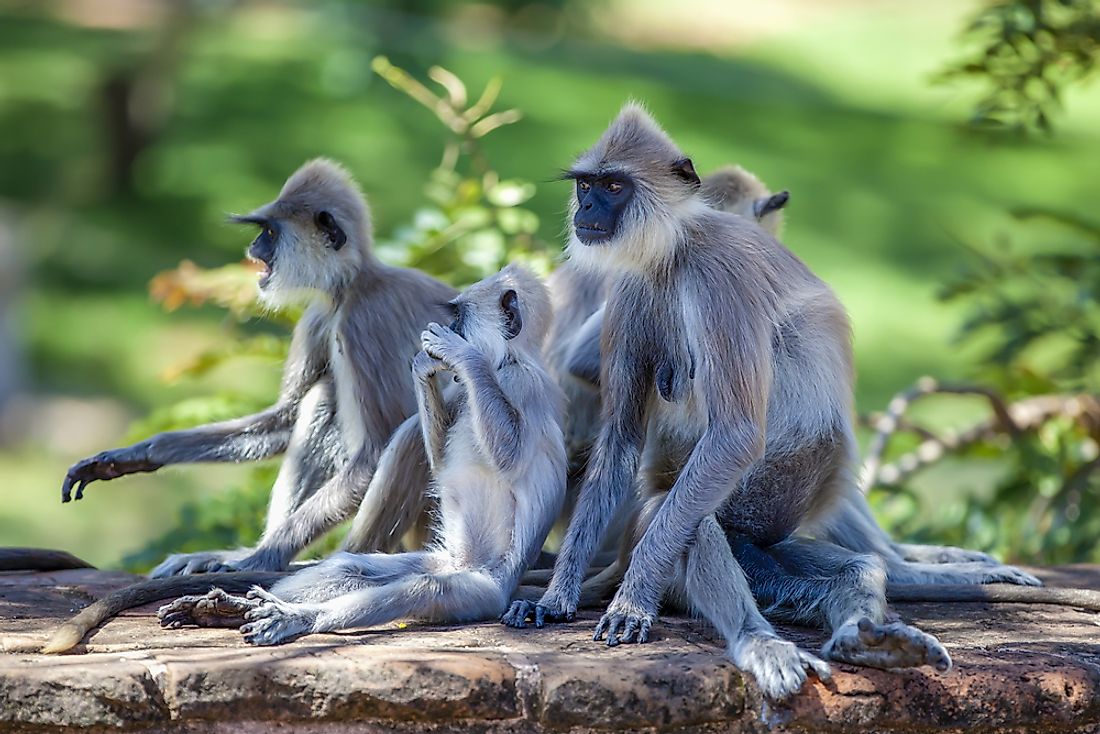
The (Semnopithecus vetulus nestor) is a primate species that is endemic to Sri Lanka. These animals can be spotted in the western region of the country around the city of Colombo. 80% of the population of the western purple-faced langur has been lost over the last 36 years. Deforestation is the primary cause of loss of this primate species. The langurs are folivorous by nature, meaning that leaves are their primary source of diet. However, with fewer trees available due to deforestation, the langurs are forced to feed on cultivated fruits found in farmers’ fields. These fruits are available seasonally and are not able to satisfy the nutritional requirements of these animals. Deforestation also forces these arboreal species to spend more time on land where they are exposed to various threats like cars, dogs, and electric poles.
6. Grey-Shanked Douc
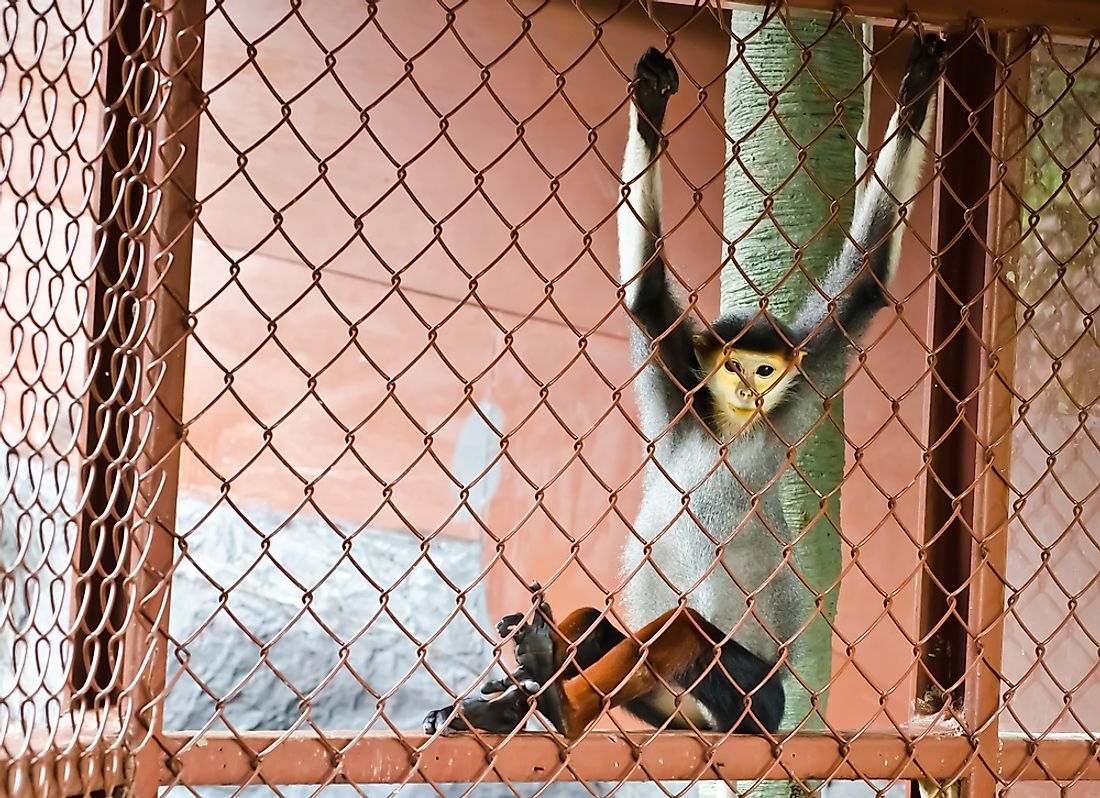
The gray-shanked douc langur (Pygathrix cinerea) is found in Vietnam and only about 550 to 700 species of this critically endangered primate survives today. Hunting for bushmeat and traditional medicines have decimated the species. The bones of these primates are used to prepare a money bone balm that is prescribed by traditional medical practitioners to patients suffering from anemia, renal dysfunction, insomnia. Young monkeys are also captured and traded in the exotic pet market. During the Vietnam War, soldiers would use the gray-shanked douc langurs for target practice. All of these factors have been instrumental in destroying the populations of this endangered primate of Asia.
5. Tonkin Snub-Nosed Monkey
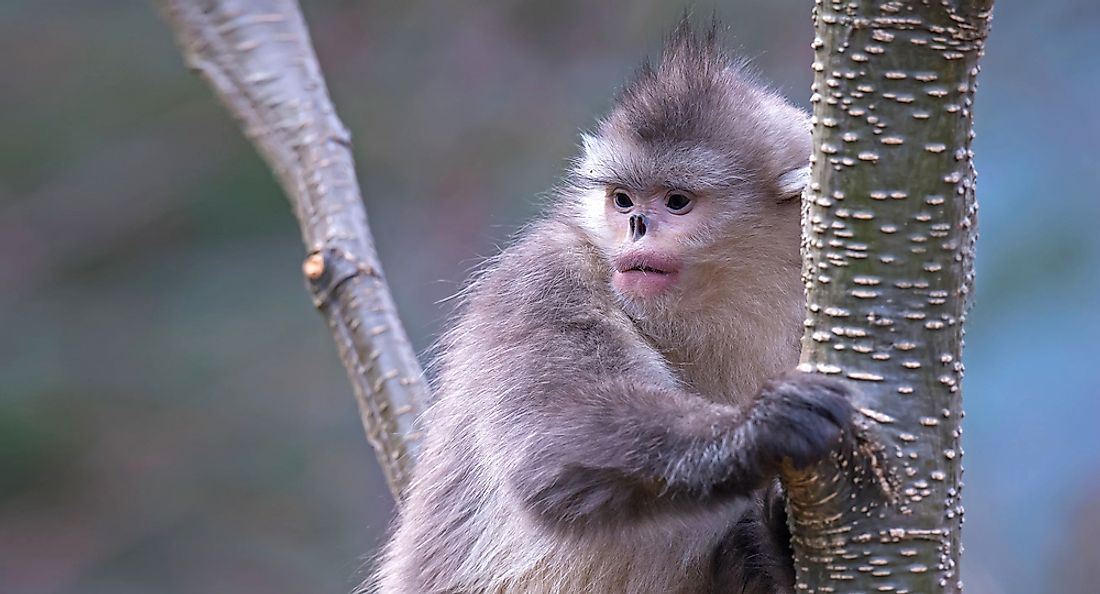
Threatened by habitat loss and hunting, the Tonkin snub-nosed monkey (Rhinopithecus avunculus) is one of the most critically endangered primates of Asia. This species is endemic to northern Vietnam. The animals inhabit patches of forest at altitudes of 200 to 1,200 meters. Once thought to be extinct, isolated populations of the Tonkin snub-nosed monkey were rediscovered in 1992. A population count of these monkeys in the Na Hang Nature Reserve found 72 individuals in 1993 while the count fell to 17 individuals in 2005: a shocking decline.
4. Eastern Black Crested Gibbon
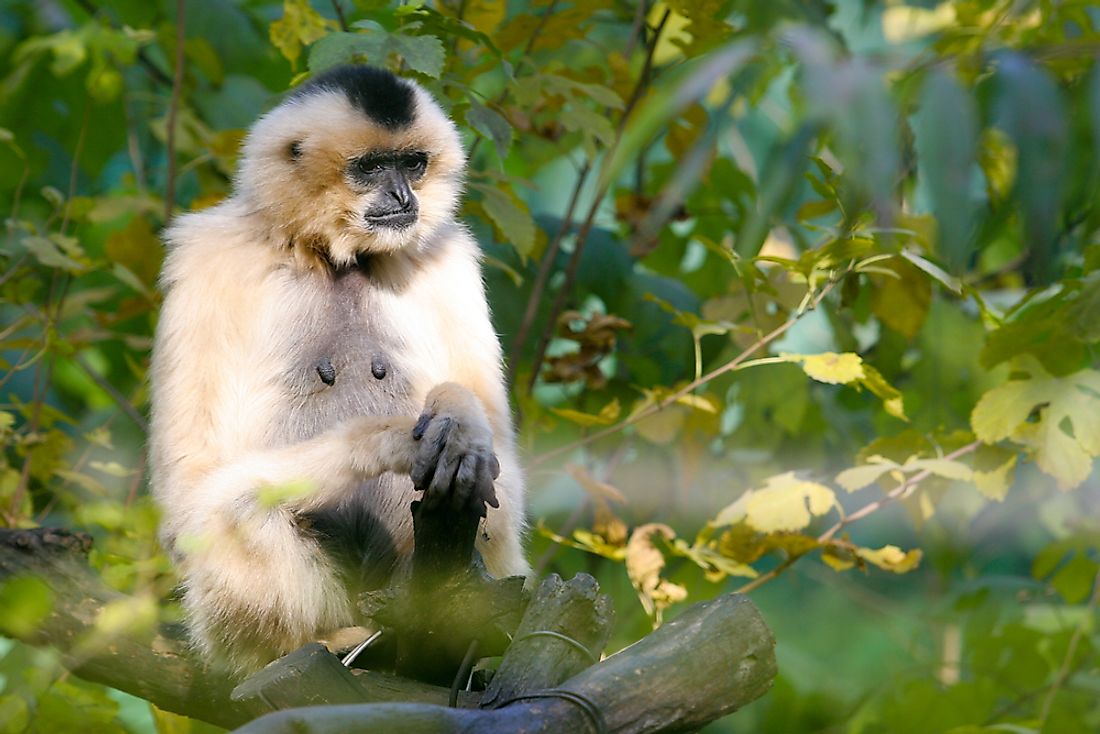
The eastern black crested gibbon (Nomascus nasutus) inhabits forests in southeast China and northern Vietnam. Thought to be extinct, the discovery of a small population of this species in 2002 in the Trùng Khánh District of northern Vietnam raised hopes among the conservationists. About 35-37 individuals of this species are currently estimated to survive in Vietnam and about 10 in China. Destruction of habitat and poaching are two major factors responsible for the critically endangered status of the eastern black crested gibbon.
3. White-Headed Langur
With fewer than 70 individuals remaining, the white-headed langur (Trachypithecus poliocephalus) is one of the most endangered primates of Asia. Two subspecies of these langurs exist, the T. P. poliocephalus which is found in the Cát Bà Island of Vietnam and T. P. leucocephalus which inhabits territory in Guangxi, China. Hunting of these langurs for traditional medicine has been a major factor in their decline. These langurs are killed for making "monkey balm,” a traditional medicine.These monkey hunters have also been known to attack tourists and guards when confronted during their illegal hunting acts. Though the distribution range of these langurs has been declared as a national park, the decline in langur population has continued to occur.
2. Hainan Black Crested Gibbon
The Hainan black-crested gibbon (Nomascus hainanus) is considered to be an umbrella species of Hainan Island in China. This species is currently classified as critically endangered by IUCN. In the 17th century, the Hainan black-crested gibbons were distributed across half of China. Today, only about 22 individuals of these species survive in the Bawangling National Nature Reserve. Illegal pulp paper plantations have replaced over 25% of the habitat of these primates. Logging activities in the lowland forests has also driven these animals to upper elevations where their food sources are limited. Currently, given the extremely low numbers and limited distribution of the Hainan black-crested gibbon, a single epidemic or a natural disaster is sufficient to eliminate all individuals of this species.
1. Sumatran Orangutan
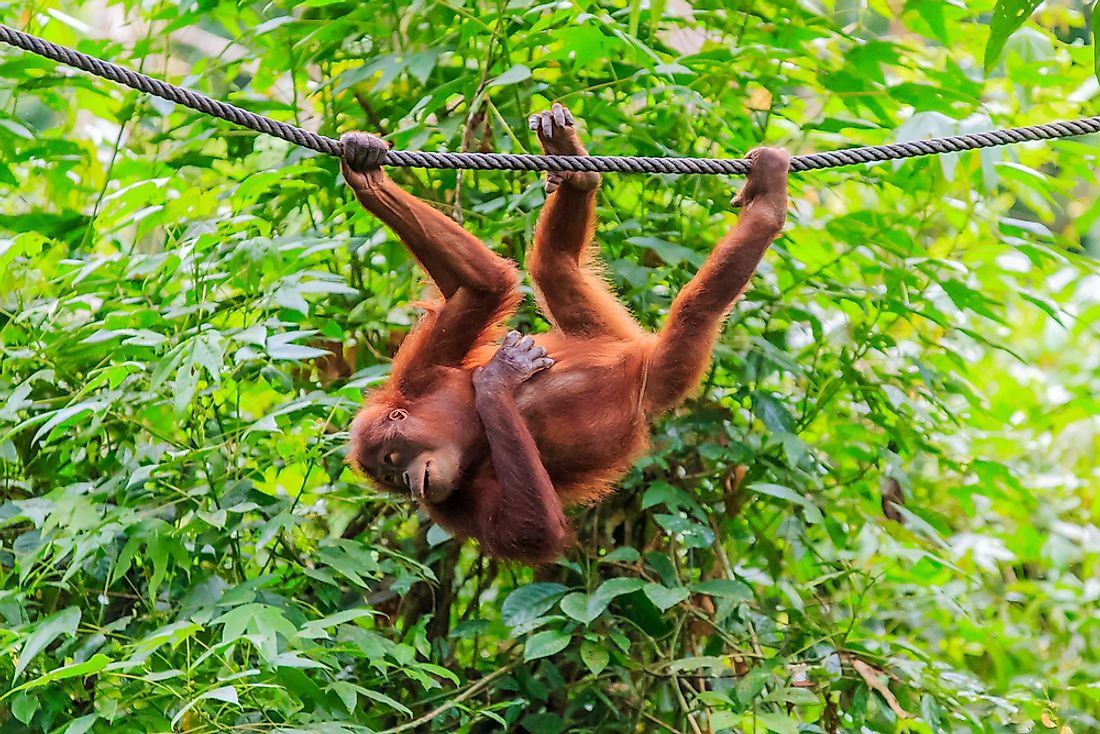
The Sumatran orangutan (Pongo abelii) is endemic to the Indonesian island of Sumatra. Today, these animals are critically endangered. A number of factors threaten their survival. Legal and illegal logging of the Sumatran forests deprive the orangutans of their habitat. Fragmentation of habitat due to road constructions, clearance of vast tracts of forested land for agriculture and palm oil plantations also threaten the survival of the Sumatran orangutans. The animals are also hunted by certain tribes for meat and persecuted by farmers as pests. Capture of these orangutans, both dead and alive, for zoos and institutions in North America and Europe also dwindles their numbers.











